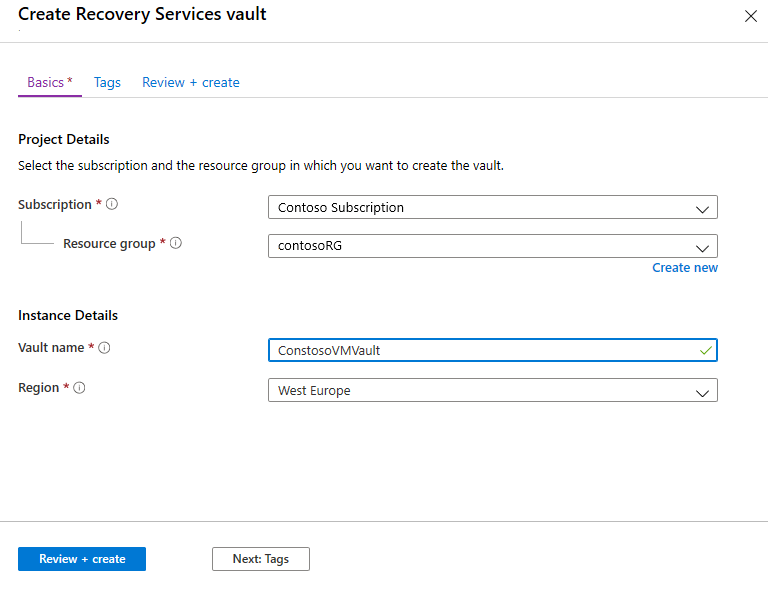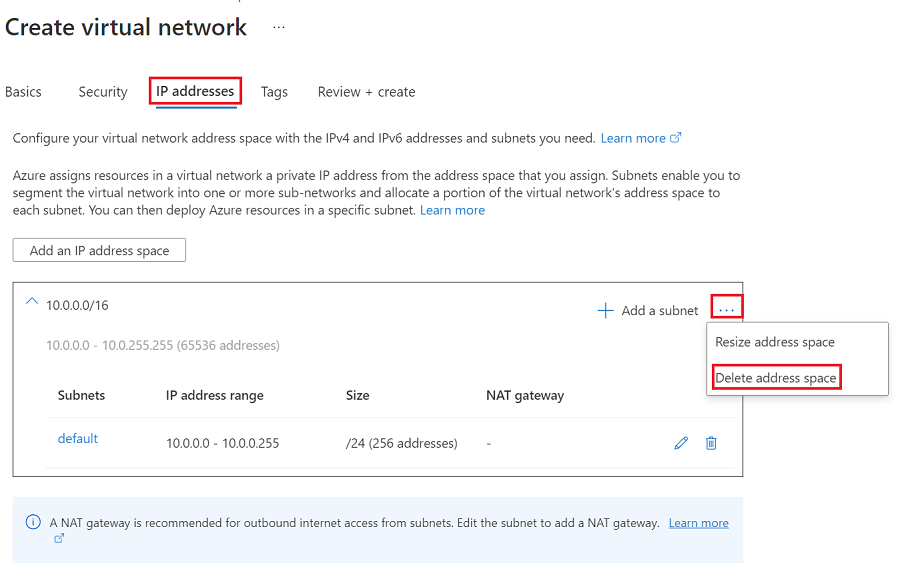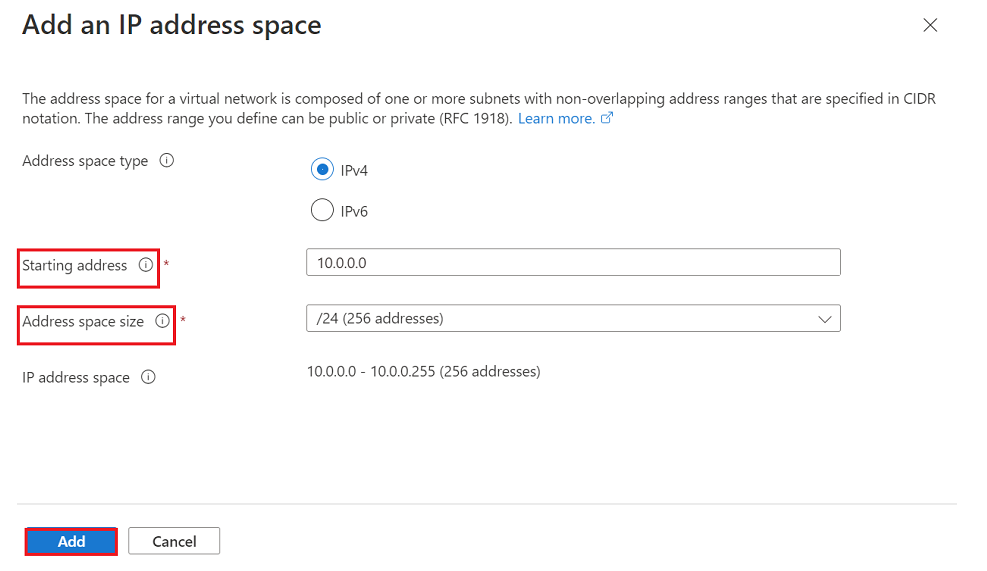Prepare Azure Site Recovery resources for disaster recovery of Azure VMware Solution VMs
This tutorial describes how to prepare Azure resources and components so that you can set up disaster recovery of Azure VMware Solution virtual machines (VMs) by using the Azure Site Recovery service. Azure VMware Solution provides private clouds in Azure. These private clouds contain vSphere clusters that are built from dedicated bare-metal Azure infrastructure.
This is the first tutorial in a series that shows you how to set up disaster recovery for Azure VMware Solution VMs.
In this tutorial, you learn how to:
- Create a Recovery Services vault. A vault holds metadata and configuration information for VMs, along with other replication components.
- Set up an Azure virtual network. When Azure VMs are created after failover, they're joined to this network.
Note
- Tutorials show you the simplest deployment path for a scenario. They use default options where possible, and they don't show all possible settings and paths.
- Some of the concepts of using Azure Site Recovery for Azure VMware Solution overlap with disaster recovery of on-premises VMware VMs. Documentation is cross-referenced accordingly.
Sign in to Azure
If you don't have an Azure subscription, create a free account before you begin. Then sign in to the Azure portal.
Prerequisites
Before you begin:
- Deploy an Azure VMware Solution private cloud in Azure.
- Review the architecture for VMware disaster recovery.
- Read common questions for VMware.
If you just created your free Azure account, you're the administrator of your subscription and you have the necessary permissions. If you're not the subscription administrator, work with the administrator to assign the necessary permissions. To enable replication for a new virtual machine, you must have permission to:
- Create a VM in the selected resource group.
- Create a VM in the selected virtual network.
- Write to an Azure storage account.
- Write to an Azure managed disk.
To complete these tasks, your account should be assigned the Virtual Machine Contributor built-in role. In addition, to manage Site Recovery operations in a vault, your account should be assigned the Site Recovery Contributor built-in role.
Create a Recovery Services vault
In the Azure portal, select Create a resource.
Search Azure Marketplace for Recovery Services.
Select Backup and Site Recovery from the search results. Then, select Create.
On the Create Recovery Services vault page, on the Basics tab, do the following:
- For Subscription, select the subscription in which you want to create the Recovery Services vault.
- For Resource group, select an existing resource group or create a new one. For example, create one named contosoRG.
- For Vault name, enter a friendly name to identify the vault. For example, enter ContosoVMVault.
- For Region, select the region where the vault should be located. For example, select West Europe.
- Select Review + create.

On the Review + create tab, select Create.
Tip
To quickly access the vault from the dashboard, select Pin to dashboard.
The new vault appears on Dashboard > All resources, and on the main Recovery Services vaults page.
Set up an Azure network
Azure VMware Solution VMs are replicated to Azure managed disks. When failover occurs, Azure VMs are created from these managed disks and joined to the Azure network that you specify in this procedure.
In the Azure portal, select Create a resource.
Under Categories, select Networking > Virtual network.
On the Create virtual network page, on the Basics tab, do the following:
- For Subscription, select the subscription in which to create the network.
- For Resource group, select the resource group in which to create the network. For this tutorial, use the existing resource group contosoRG.
- For Virtual network name, enter a network name. The name must be unique within the Azure resource group. For example, enter ContosoASRnet.
- For Region, select (Europe) West Europe. The network must be in the same region as the Recovery Services vault.

On the IP addresses tab, do the following:
Because there's no subnet for this network, you first delete the pre-existing address range. To do so, select the ellipsis (...) for the available IP address range, and then select Delete address space.

Select Add an IP address space.

For Starting address, enter 10.0.0.
For Address space size, select /24 (256 addresses).
Select Add.

Select Review + create.
On the Review + create tab, select Create.
The virtual network takes a few seconds to create. After it's created, it appears on the Azure portal dashboard.
Next steps
Learn more about:
Feedback
Coming soon: Throughout 2024 we will be phasing out GitHub Issues as the feedback mechanism for content and replacing it with a new feedback system. For more information see: https://aka.ms/ContentUserFeedback.
Submit and view feedback for